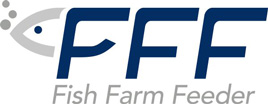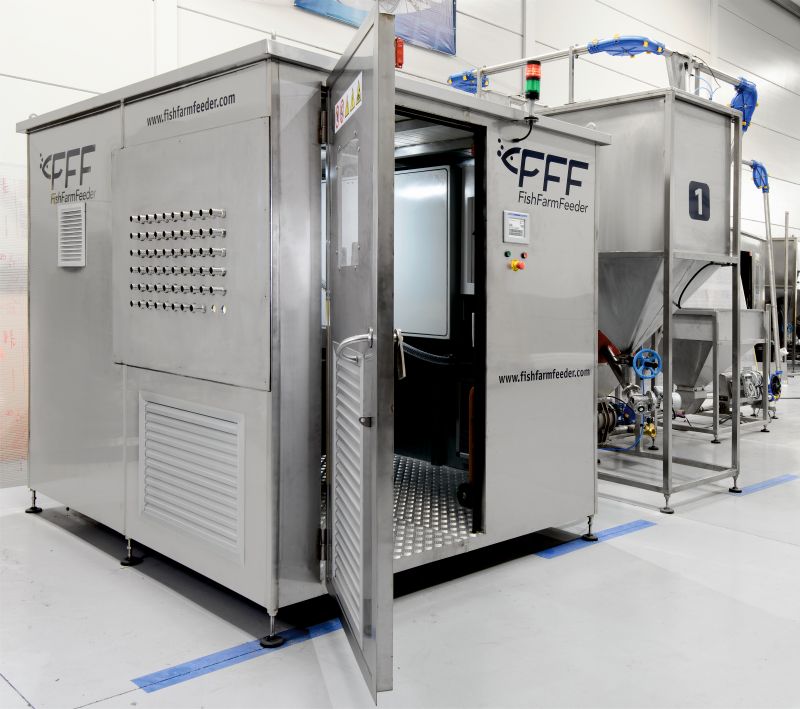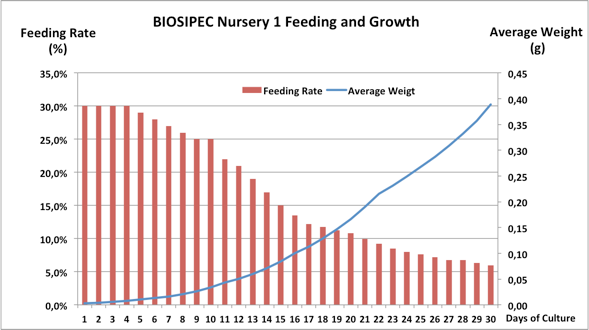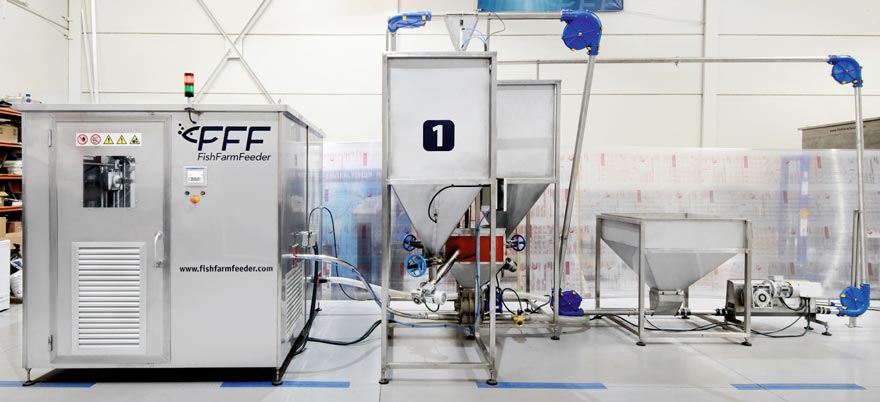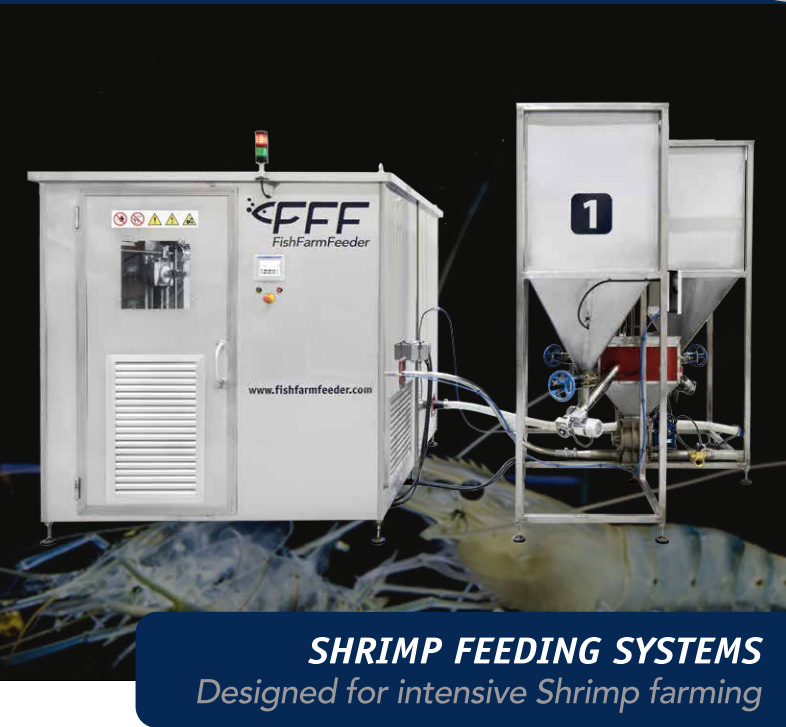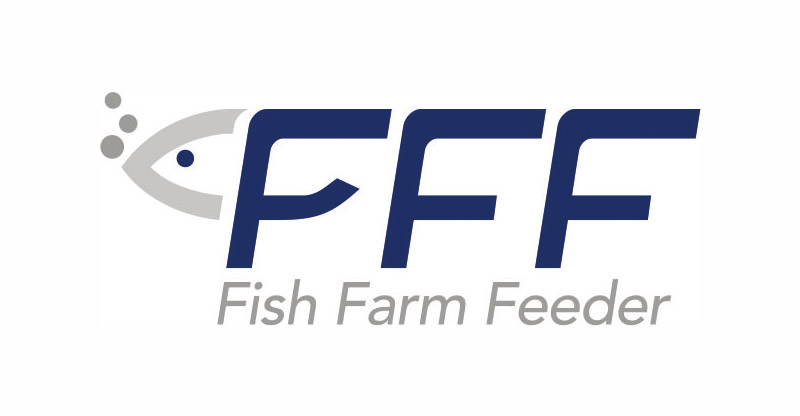RAS shrimp farming has evolved recently towards a better control of the aquaculture conditions, in order to avoid disease incidences, as well as reducing its environmental impact. Optimizing feeding is key in intensive shrimp farming, bringing along obvious benefits:
- Feeding the shrimp according to their capacity to eat all day/night long will optimize its growth.
- Harvest individual weight can come sooner, or larger weight obtained at constant duration. Gains in the order of 2 weeks over the cycle can be expected leading to more cycles per year being performed at the same farm.
- Improving continuous shrimp feed availability and dispersion of the feed particles over the tank area will participate in improving survival limiting the cannibalism risk.
- Optimizing shrimp feed availability means also that the Feed Conversion Rate (FCR) can be improved reducing feed cost incidence as well as environmental impact.
From harvest yields of a couple of metric tons per hectare in large earth ponds, aquaculture shrimp farming in RAS system has developed new models of allowing for harvest of 5 Kg/m3 (up to 60-70 MT/hectare).
The first step into such evolution is seen in the increase of super intensive shrimp farms using a Nursery step under intensive conditions before their pond culture. Indoor RAS systems represent the most advanced technology view on intensive shrimp farming while BFT (Biofloc technology) is also gaining acceptance.
When feeding large ponds relies on labour and most often kayaks, the intensive shrimp farming leads to a much more concentrated biomass and opens the door to a better feeding control using automatic feeders coming from the more advanced fish farming industry.
Indoor shrimp farming equipment brings on new scope, namely splitting the Daily Feed Gift (DFG) is possible over a longer period of time. Retention time of feed on tank bottom and/or in the water column can be reduced and feed being then better used by shrimp.
The rather small tank or lined pond area dedicated to intensive culture means spreading the feed over a significant area of the tank/pond becomes possible without having to float feed bags on kayaks.
Intensive Nursery
The Nursery process is not yet fully standardized. In a case of study in an intensive shrimp farm, densities of 2 to 12 PLs/L at start, with durations of 21 to 35 days, could be observed. Animal size ran from 5 mg at start to 0,3-1g at the end of the Nursery cycle. The feed size ranged between the most advanced 200 microns particle micro-diets up to the 1mm diameter pellet.
It was shown that PLs look for feed day and night and should be offered feed availability over 24hr to reduce stress and cannibalism risks.
Feeding the nursery tank once per hour over 24 hour, or even at higher frequency, becomes a must to have, but is not adapted to usual workforce availability at the farm.
It also leads to rather small doses at each feed event requiring sophisticated aquaculture dosing systems, like this Shrimp Feeding System with feed loader integrated for RAS intensive shrimp fish farms.
For example, a 100m3 nursery tank stocked at 3PLs/l will require around 500g feed at start, which means doses of 21g every hour. Meanwhile at harvest after 30 days it might require up to 12Kg DFG and 500g dose per hour.
Fast evolution of the shrimp biomass in the tank requires also fast and continuous adaptation of the DFG that a computer driven feeding system is able to include as a standard feature.
On-Growing
Now reduced to 60-90 days by the development of the Nursery practice, the on-growing cycle can also be intensified in one single or two separate steps.
Size range usually is from 0,5 to 25 grams and their shrimp feed requirement falls by now within a limited range of pellets from 1mm up to 2,4mm depending on local practices and factories.
The new approach puts water quality at risk. Both BFT and RAS dislike heavy punctual loads of feed being distributed in tanks.
Therefore, feeding over 24h not only fits with the shrimp behaviour, but also helps to reduce any instantaneous organic auto-pollution of the system.
Continuous adaptation of the DFG by computer releases pressure on technicians.
Seeding at 300 Shrimp per m3 at 0,5g will lead to DFGs of 1,3-1,5Kg up to 15Kg. A fast feeding system, depending upon the number of tanks in parallel, will be capable of feeding every hour if not at higher frequency.
Our Automatic Feeding System Solutions for Shrimp
FishFarmFeeder has manufactured and successfully installed Automatic Feeding Systems for Semi-intensive and Intensive Shrimp Farm, covering the nursery stage with micro diets from 0.2mm up to 1mm and on-growing stage with pellets from 1mm up to 2,4mm.
The technology applied to fish farming is the same that has been used in the development of indoor shrimp farming equipment.
